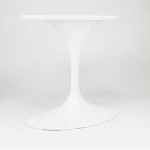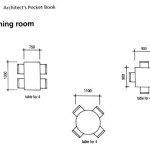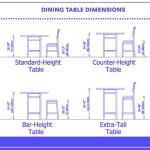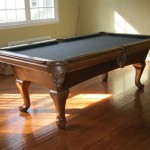Harmonizing Living and Dining: Designing a Living Room with a Sofa and Dining Table
The modern home often requires rooms to serve multiple purposes. Open-plan living, in particular, often combines the living and dining areas into a single, cohesive space. Integrating a sofa and dining table successfully demands careful planning and consideration of design principles. The goal is to create a functional and aesthetically pleasing environment that feels both comfortable and well-defined.
Successfully blending these two distinct functions requires a strategic approach. The challenge lies in ensuring that the living area remains a relaxing retreat while the dining area feels conducive to meals and gatherings. This article will explore key considerations and strategies for effectively incorporating a sofa and dining table into a single living room.
Defining Zones Within the Shared Space
One of the primary challenges in combining a living room and dining area is defining the zones. Without clear boundaries, the space can feel chaotic and disorganized. Several techniques can be employed to visually separate the two areas while maintaining a cohesive flow.
Using an area rug is a highly effective method for grounding the living area. A rug placed under the sofa and coffee table visually delineates the space as a distinct sitting area. The rug's color, pattern, and texture can complement the overall design scheme while subtly defining the living zone.
Strategic furniture placement is equally crucial. Consider positioning the sofa to act as a visual barrier between the living and dining areas. For instance, the back of the sofa can face the dining table, creating a clear distinction between the two spaces. Alternatively, a console table placed behind the sofa can further reinforce this boundary, offering both storage and visual separation.
Lighting plays a significant role in defining zones. Employing different lighting schemes for each area can subtly differentiate their functions. The living area might benefit from softer, ambient lighting, such as table lamps and floor lamps, creating a relaxed atmosphere. The dining area, on the other hand, requires brighter, more focused lighting, such as a pendant light or chandelier positioned directly above the dining table. This not only provides adequate illumination for meals but also visually separates the dining area from the more dimly lit living space.
Color variations can also contribute to zone definition. A subtle shift in wall color or the use of accent colors can create visual interest and subtly define the different areas. Consider using warmer, more inviting colors in the living area to promote relaxation, while opting for brighter, more energizing colors in the dining area to stimulate conversation and appetite. Alternatively, a continuous neutral color palette can be used throughout the space, with accent colors strategically employed in furniture, accessories, and artwork to differentiate the zones.
Finally, consider the architectural elements of the room. Existing features, such as a fireplace or a built-in bookshelf, can naturally serve as a focal point and help to delineate the living area. Similarly, a change in flooring, such as transitioning from hardwood in the living area to tile in the dining area, can create a clear visual separation.
Selecting Furniture for a Unified Aesthetic
While defining zones is important, maintaining a cohesive aesthetic is equally crucial. The furniture selected for both the living and dining areas should complement each other in terms of style, color, and scale. This creates a sense of harmony and prevents the space from feeling disjointed.
Consider the overall style of the room. Whether it's modern, traditional, or eclectic, the furniture should reflect that aesthetic. If the living area features a sleek, contemporary sofa, the dining table and chairs should also share similar design elements. Conversely, if the living area has a more traditional feel, the dining furniture should complement that style.
Color coordination is essential. Choose a color palette that works well throughout the entire space. This doesn't necessarily mean that all the furniture needs to be the same color, but it should share a common thread. For instance, you might choose a neutral sofa and then incorporate accent colors in the dining chairs and accessories that complement the sofa's color scheme. Using a limited color palette will help to create a sense of visual unity.
Scale is another important factor to consider. The furniture should be appropriately sized for the room. A large, oversized sofa in a small space can overwhelm the room and make it feel cramped. Similarly, a small dining table in a large space can look out of proportion. Measure the room carefully and choose furniture that is scaled appropriately.
Consider the materials of the furniture. Mixing different materials can add visual interest, but it's important to do so thoughtfully. For instance, you might pair a leather sofa with a wooden dining table and metal chairs. The key is to ensure that the materials complement each other and contribute to the overall aesthetic.
Pay attention to the details. Small details, such as the shape of the legs of the furniture or the hardware used on the cabinets, can make a big difference in the overall look of the room. Choose furniture with details that complement each other and contribute to the overall design scheme.
Ultimately, the goal is to select furniture that creates a sense of harmony and balance between the living and dining areas. By carefully considering style, color, scale, and materials, you can create a space that feels both cohesive and inviting.
Optimizing Functionality and Flow
Beyond aesthetics, the functionality and flow of the combined living and dining area are paramount. The space should be comfortable for both relaxation and dining, and traffic flow should be smooth and unimpeded.
Consider the placement of the dining table in relation to the kitchen. Ideally, the dining table should be located near the kitchen to facilitate serving meals. However, it's also important to ensure that the dining area doesn't feel like an extension of the kitchen. Use visual cues, such as a rug or lighting, to define the dining area as a separate space.
Think about the traffic flow. Ensure that there is ample space to move around the furniture without bumping into things. Pay particular attention to the space around the dining table, as people will need to be able to pull out chairs and move freely. The path from the entrance of the room to the various seating areas should be clear and unobstructed.
Consider incorporating multi-functional furniture. For instance, a coffee table with storage can provide a place to store blankets and pillows, while a buffet or sideboard in the dining area can offer additional storage for dishes and linens. Choose furniture that serves multiple purposes to maximize space and functionality.
Pay attention to sightlines. Consider what can be seen from different vantage points in the room. For instance, if the dining table is visible from the sofa, make sure that it is visually appealing. Choose a stylish tablecloth or centerpiece to create a focal point.
Consider the needs of the occupants. Think about how the space will be used and choose furniture and accessories accordingly. If the room is primarily used for relaxing and watching television, prioritize comfortable seating and a large screen. If the room is frequently used for entertaining, prioritize ample seating and a large dining table.
The placement of electrical outlets and lighting fixtures is also crucial. Ensure that there are enough outlets to accommodate all of the electronic devices that will be used in the room. Consider adding dimmer switches to the lighting fixtures to create different moods and atmospheres. Adequate lighting is essential for both functionality and ambiance.
By carefully considering these factors, you can optimize the functionality and flow of the combined living and dining area. The goal is to create a space that is both comfortable and practical, and that meets the needs of the occupants.
Integrating a sofa and dining table into a single living room is a design challenge that requires careful consideration of zoning, aesthetics, and functionality. By employing strategic design principles, it is possible to create a harmonious and functional space that seamlessly blends relaxation and dining.

Living Room Meets Dining The New Way To Eat In

Living Room Dining Combo Ideas With Tricks Doğtaş

Multipurpose Dining Room The Oak Furnitureland Blog

Living Room And Dining Design Ideas Designcafe

Dining Table Behind Sofa Transitional Living Room B Moore Design In Couch

30 Living Room Dining Combo Ideas 2024 One For All Rectangle Rectangular Rooms

Mixing A Sofa With Tables And Chairs When How To Do It

Living Room Diner Layouts Combined Dining Designs The Block

Open Kitchen Living Room Ideas Furniture And Choice

How To Arrange Furniture In A Living Room Dining Combo 21oak
Related Posts








